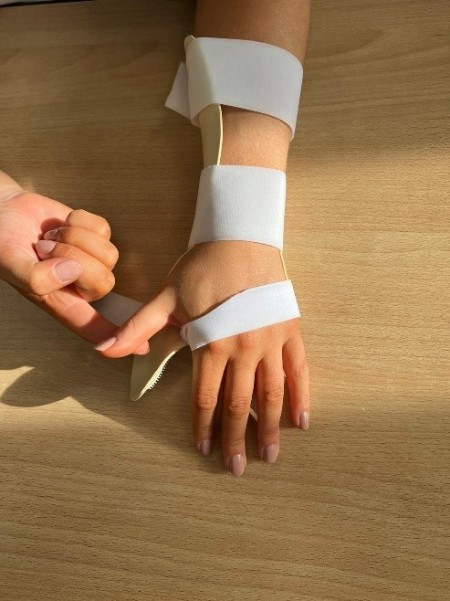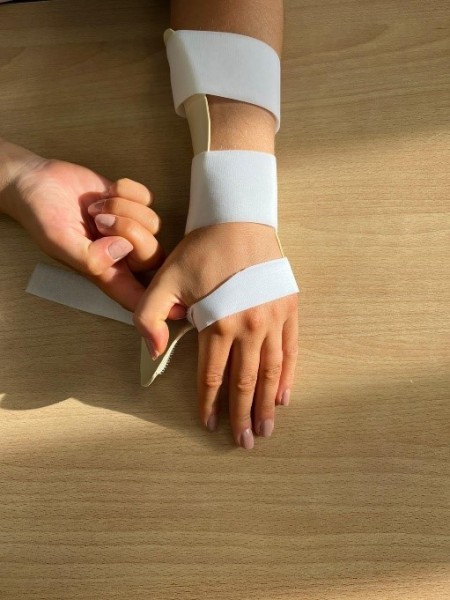Tendons are like ropes that attach the muscles in your forearm to your hand to enable your joints to move. If the tendon has been cut or damaged, surgery is often required to bring the ends of the tendon back together so that they can heal.
You have been referred to the Hand Therapy Service for ongoing care and treatment. This leaflet gives you important information about your rehabilitation programme; you will be guided through this programme by your therapist and may be provided with additional information and exercises along the way.
Week 0-6
Splint
You will be provided with a splint which limits the movement in your thumb for the first 6 weeks. This protects the tendon following your surgical repair. This must be worn at all times.
Oedema
To minimise swelling, keep your hand lifted up to your shoulder level. When sitting or lying you should use pillows to support it especially when you are asleep.
Scar Massage
Once the wound is healed, scar massage can be commenced. Massage can help to soften, desensitise, and keep scar tissue supple.
- Using a thick non-perfumed cream such as E45, aqueous, or nivea.
- Massage on and around the scar in small circular motions.
- Apply a firm pressure so the tip of your nail goes white.
Exercises
You need to perform the following exercises described in this leaflet to help the tendons heal. Only perform the exercises prescribed and do not attempt to use your thumb in any activities until instructed to do so. You may use your fingers in light activities as listed on the back of this leaflet.
Repeat 5-10 reps x 4 day



Potential complications:
- Infection – if your hand becomes increasing painful, hot or looks red and swollen you may have an infection.
- Tendon rupture – Any sudden loss of movement with or without pain, may indicate that your tendon has torn.
If you experience any of the above it is important you contact your therapist, GP or consultant.
Week 7 onwards
Splint
Your thermoplastic splint will be discarded. You may be provided with a different splint initially for function if required.
Function
You can commence light to moderate activity dependent on your progress, speak to your therapist. Do not commence any sporting or tight gripping activities at this stage as the repair is weak and could rupture.
Driving
We do not advise that you drive before 8 weeks post-surgery. DVLA advice is to contact your insurance to notify them that you have had surgery.
Exercises
Your exercises will be progressed by your therapist. Do not force your thumb with your other hand into a bent position until after 8 weeks post-surgery.
Week 12
Precautions no longer apply.
Activity guidance
| Light Activities | Moderate Activities | Heavy Activities |
|---|---|---|
|
|
|
George Eliot Hospital is a smoke free environment. For help and advice to stop smoking you can call the national helpline on 0300 123 1044 or visit https://
Copyright
Except where otherwise noted, this item is licensed under the CC BY license (https://
If you are a rights holder and are concerned that you have found material on our patient information resources website, for which you have not given permission, or is not covered by a limitation or exception in national law, please contact us using the Feedback form providing your contact information and full details of the material.